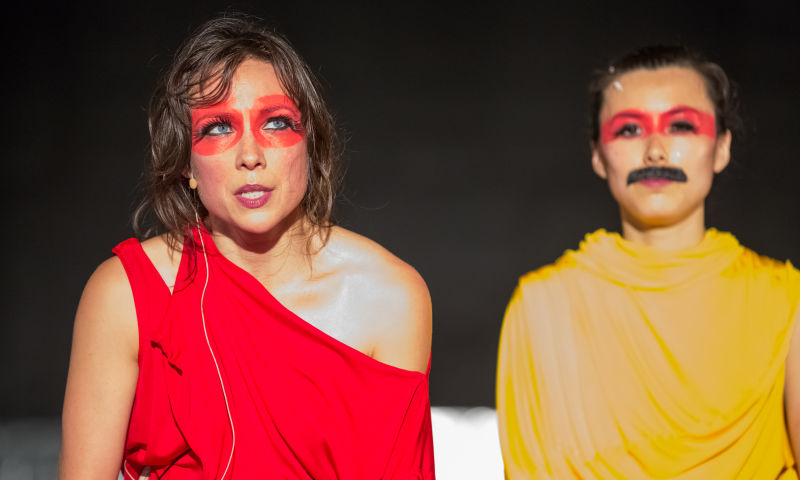I would say all of these events are equal. There is feast, there is performance, there is community action, and there is story, which takes the form of curated readings by local authors. The performance, of course, is what we bring. It begins outside and moves into the theater and we work both with the cast that I bring, but also a local cast. And then the feast: it’s like a celebration of all these things coming together. As we’ve been on tour with SHORE, we get to know a place and people as they come to different parts. It’s been a wonderful exchange.
What is your approach?
It starts with paying attention, or different ways of listening and noticing. These chances to listen to other people’s words, stories, experiences, and connections or disconnections to San Francisco is one way. The experience of getting my hands in the dirt, getting to know native plants of the area and being outside with people is another way. Likewise with the food, we always ask at the feast that people bring a dish that is meaningful to them. It doesn’t mean it’s always geographically based at all. But certainly I get a sense of what is local, what is the food that is cared for in this place, what are people bringing to share, what is important here.
How do you express the concept of “paying attention” in your choreography?
Being that I’m a dance maker and performance artist, my work stems from how does my body pay attention. Sometimes that is with stillness; sometimes that is with a different kind of noticing. That’s why all of SHORE is rooted in action. Performance is action, and so is volunteerism, so is coming together, so is cooking, so is sharing, so is listening, and giving time for that is what SHORE is trying to do.
Your work is filled with spectacular props. How does the staginess of your work connect to your concerns about the land and cultural identity?
Two different thoughts come to mind. I want my performances to be in conversation with the actual physical world and our interactions with it. That’s one strain of thought. Another strain of thought is identity. Being a choreographer who is of Yup’ik descent means I say that people often have questions about what a native choreographer might be like. And so the way I seek or know myself and my culture isn’t necessarily what you think or know about my culture. Things like a mustache on this beautiful woman is partly prop and partly it’s an identifier of right: you might see woman, but what else is there? Can we look deeper, can we acknowledge that there are more possibilities than the one we initially see. I think that all the props and sets relate to that theme in different ways.
You often uses non-professional dancers. Besides the obvious, what’s the difference between working with trained dancers versus regular people?
There’s nothing wrong with difference. Once there are two people, you have difference. There’s a ton of movement happening within our bodies all the time and I think that’s where it begins — the movement of somebody who is not trained, but who is focused and walking slowly. For me, I could watch that all day long. That is as exquisite as working with highly trained dancers who are doing specifically-timed and intricate things. It’s a different kind of watching.
Shore, the performance, plays at the ODC Theater, Thursday to Saturday, August 6-8.
Shore, the curated reading, takes place at Red Poppy Art House, August 1st and 2nd.
Shore, the community action, takes place at Candlestick Point State Park near Cove Point on Wednesday, August 6th from 10 am to 4 pm.
Shore, the feast, takes place at Candlestick Point Park August 9th at 5 pm.


